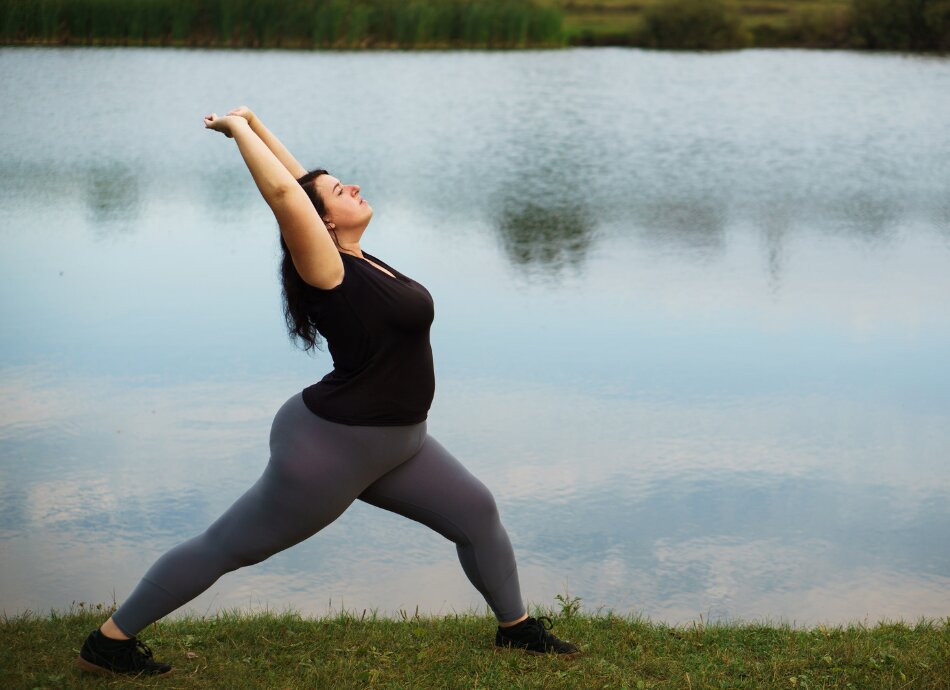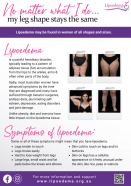Video: 5 types of lipedema
This video may take a few moments to load.
(The Lipedema Project, US, 2015)

Low or no data? Visit zero.govt.nz, scroll down the page then click on our logo to return to our site and browse for free.

This video may take a few moments to load.
(The Lipedema Project, US, 2015)
Health professionals are not sure what causes lipoedema but it seems to be genetic (run in families) and triggered by hormonal changes. So it is likely that you inherit the possibility of developing it and then it starts at a time when your hormones are changing, eg, at puberty, when taking the contraceptive pill, during pregnancy or at menopause. It is thought to affect about 11% of the adult female population.
The main symptom is the development of areas of fat, usually on your legs and buttocks and sometimes on your arms.
Your doctor can diagnose it by physical examination and from asking about your history. There is no specific diagnostic test and there are no blood or urine (pee) markers to test for.
Things your doctor will consider include:
There is no cure for lipoedema but there are some treatments that can help with relieving symptoms to improve your quality of life, slowing down the progression and preventing complications.
These include:
The condition will not go away and can get gradually worse. But getting a diagnosis as soon as possible and getting medical help can assist with managing the symptoms.
If you are overweight, losing weight will help with staying mobile and active. Getting heavier may make the condition worse and harder to treat. Doing gentle exercise like walking, swimming, cycling and stretching to remain fit and strengthen muscles can help. Avoid sitting still for long periods of time.
Look after your skin, making sure you wash and dry any skin folds carefully and apply suitable skin care products. If you get insect bites, cuts or abrasions keep an eye on them as you may be more likely to get skin infections in the affected areas.
If you find yourself worrying or getting depressed about your symptoms ask for help. Talk to your doctor or nurse who can refer you to a counsellor.
There is not a lot of specific support available for people in Aotearoa New Zealand with lipoedema, perhaps because of a lack of awareness of the condition.
Unfortunately it is not possible to prevent it, but there are things you can do to manage the symptoms and slow down its development.
The following links provide further information about lipoedema. Be aware that websites from other countries may have information that differs from New Zealand recommendations. In the United States the condition is known as lipedema.
A range of information and personal stories(external link) Lipoedema Australia
Information and private membership(external link) Lipoedema Warriors Facebook page
Lymph Info Trust(external link), facebook page(external link)
I'm over being told that I just need to lose weight(external link) Lipoedema Australia
No matter what I do, my leg shape stays the same(external link) Lipoedema Australia
Lipoedema – definition and pathogenesis(external link) DermNet NZ, 2020
Best practice guidelines on the management of lipoedema(external link) Wounds UK, 2017
Lipedema – a frequently misdiagnosed and misunderstood fatty deposition syndrome(external link) Wound Care Journal, 2010
The Lipedema Project(external link) provides online courses and materials. A lecture on dietary recommendations for lipoedema and lymphoedema can be found here.(external link)
Standard of care guidelines and video(external link) Lipedema Medical Solutions, US
Lymphoedema therapists(external link) also provide therapy for people with lipoedema

Lipoedema Australia

Lipoedema Australia
Credits: Healthify editorial team. Healthify is brought to you by Health Navigator Charitable Trust.
Reviewed by: Dr Sharon Leitch, GP and Senior Lecturer, University of Otago
Last reviewed:
Page last updated: